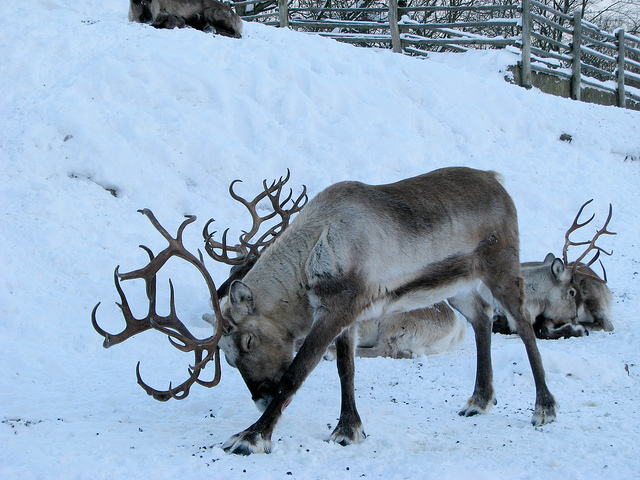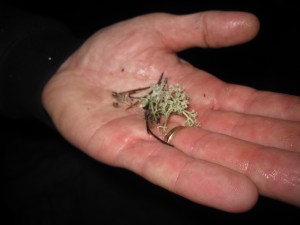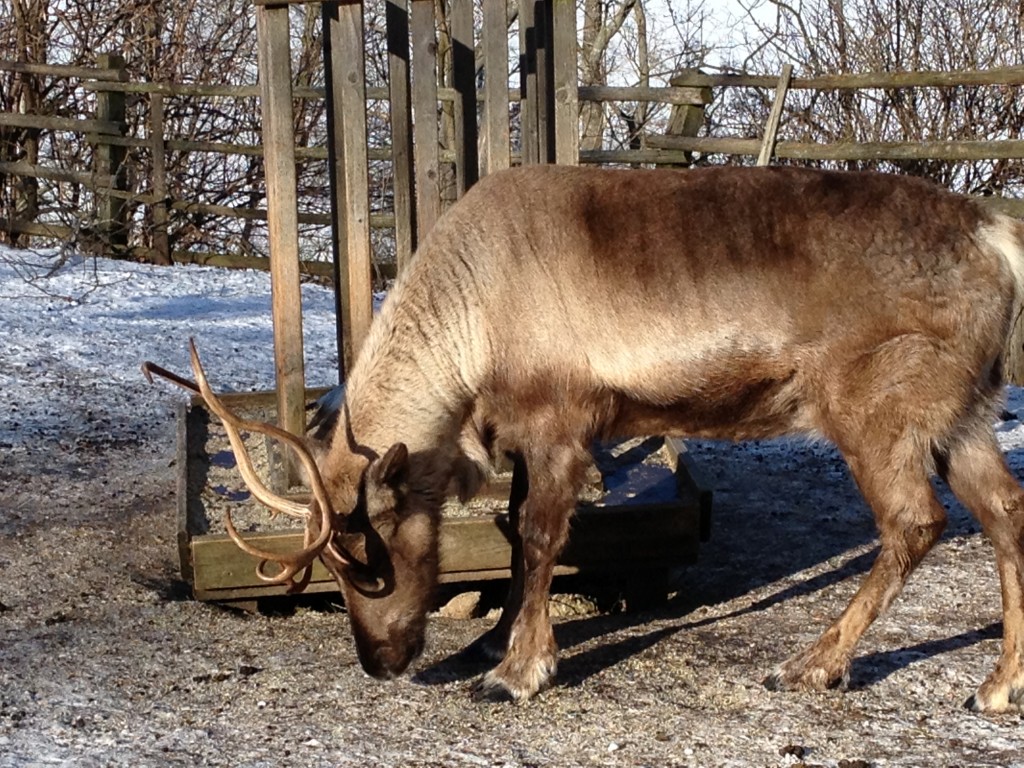Search Results for Tag: climate
1st World Youth Sustainability Summit 2013 in Berlin
Young people from all over the world are in Berlin today to take part in the first World Youth Sustainability Summit. The conference is organized by youthinkgreen, an international organization that brings together young folks from 11 different countries, such as Egypt, Brazil, China, India or Germany. They all come from diverse cultural, religious and social backgrounds. The idea behind youthinkgreen is to train the youngsters to become climate ambassadors. They’re meant to use their knowledge to set up and support sustainability projects in the countries they come from.

The Berlin-based organization has some prominent supporters – German Chancellor, Dr. Angela Merkel and UNFCCC Executive Secretary Christiana Figueres and the president of the European Parliament, Dr. Hans-Gert Pöttering.
Over the next ten days, many of the youthinkgreen network’s members will be in Berlin to get in touch with politicians, scientists and residents of the German capital to discuss future challenges.
Youth and Sustainability in Everday Life – Challenge, Rethink and Revive Global Ways of Living
The conference will kick off later today at the Mercator Foundation in Berlin, followed by workshops, speeches and excursions until May 20th. The participants are to visit Berlin’s rubbish collection and sanitation department BSR and popular urban gardening site Prinzessinnengarten. At the Brandenburg Gate, youthinkgreen plans to approach residents and tourists while planting the so called “Tree Of Hope,” an idea that Global Ideas followed during the last Climate Summit in Doha, Qatar in December 2012.
The most urgent questions for youthinkgreen are: what kind of a lifestyle do you support for today, tomorrow, the future? In which aspects are politics, economy and civil society responsible for the organisation of a humane life? Doesn’t the wish for a future socially and ecologically secured belong to the catalogue of human rights?
The result of the summit will be a common position paper written by the participants on “Youth and Sustainability in Everyday Life – Challenge, Rethink and Revive Global Ways of Living.”
You can follow youthinkgreen on facebook and twitter. We’ll come back to the World Youth Sustainability Summit with some young voices from the conference, later this week. Participants will write about their experiences, feelings and the results of the conference.
Earth Day 2013 – the day google releases the tiny bears
Today is Earth Day, a day to raise the awarness for climate protection and to make clear we don’t have a backup-earth waiting in the cellar if we have wasted this one. The Earth Day movement is has quite a long tradition, this year it’s 43 years old, a milestone Google dedicates one of it’s occasional doodles.
Also these dedications have a long tradition, starting with two aliens looking at our planet in 2003 over melting polar ice in 2007 up to animated flowers in 2012.
This year’s the design is more elaborate. You will see a scene of hills with snow-capped mountains and a lake teeming with fish, bears peeping out caves, rain falling from clouds if you click them. It’s playfull, cute and may work as a mind-opening tool to make sure everyone knows what gem we live on.
Google has started a few efforts lately to support a greener environment. It’s funded renewable energy projects and published its carbon footprint for the first time.
Earth Day was born in the US in 1970. It’s idea is to activate “individuals and organizations to strengthen the collective fight against man’s exploitive relationship with the planet.”
Earth Day was born in the US in 1969, presented as a concept at the UNESCO conference in San Francisco. It’s idea was and still is to activate “individuals and organizations to strengthen the collective fight against man’s exploitive relationship with the planet.”
At the same time Gaylord Nelson U.S. Senator from Wisconsin back then thought about a national day of the environment after witnessing the ravages of the 1969 massive oil spill in Santa Barbara, California. The idea became popular, so since 1970 “Earth Day“ became a regular and steady growing event. During the 1990s the day crossed borders and became what it is today, a worldwide supported day in honor of the earth.
Exploring the North – ‘Hunting’ for reindeer
If you’re up in the North, there are some things you just have to do – hunting reindeer for example. But instead of using guns, we’ve been on their tracks with a camera hoping to get a photo.

Photo Credit: CC http://www.flickr.com/photos/edumariz/with/5332543363/#photo_5332543363
Reindeer are mostly active during twilight. So the daylight’s almost fading by the time our rented car enters an unimposing little side street out in an industrial area near the harbor of Pitea in Sweden. Here, they don’t clear the roads of the snow anymore, but instead push some of it aside and flatten the rest.
Beside the street, dark green fir trees soar high and you can smell reindeer dung although you can’t see the beasts yet. Patrick Lundgren stands next to his pickup truck. He appears shy at first though that seems at odds with his powerful stature.  The man from the native Sami people radiates calm (even in unsettling situations as we found out later). He speaks slowly, carefully choosing his words. His attentive eyes rest thoughtfully on the foreigners who want to see “his” reindeer.
The man from the native Sami people radiates calm (even in unsettling situations as we found out later). He speaks slowly, carefully choosing his words. His attentive eyes rest thoughtfully on the foreigners who want to see “his” reindeer.
Sami people have been reindeer herders for generations in the Nordic countries. The animals are only found here today thanks to the Sami who tend to them. The herders take them down from the North to southern regions where they can still find food themselves, if there wasn’t a changing climate.
Patrick takes his shovel from the pickup, trudges through the snow into the forest (while the rest of us struggle not to fall into the snow at every step) and starts digging. One meter of snow has to be displaced until he hits solid ground. The snow cracks a little bit every time his shovel hits the layer. He bends over, reaches into the hole and grabs something. He blows into his hand and holds it out. “This is what they like,” he says and shows us a few lichens and fir needles. 
During a normal winter, the reindeer could dig into the ground themselves with their snout. But this winter isn’t normal. Last week it was +10 degrees Celsius – far too warm. The snow started to turn to water. But then temperatures dropped again around minus 11 degrees Celsius again and the melted water froze to ice, forming a rock-solid hard cover which the reindeer cannot penetrate. Patrick then has to provide food in the form of pellets for the about 3,000 animals in the forest – each animal eating about two kilograms. That’s quite expensive though, but it’s the only chance for the reindeer who double up as “climate helpers.”
Finally, we not only got what we came for but we also learned much more. Looking at the people, environment and treasures around the Arctic circle, you realize that they are all connected. So, when my journey is over I hope to give you a broader picture of the Artic circle region, one that shows the links between what’s playing out on the ice and the seemingly disparate stories below the surface.
Exploring the North – an unlikely climate helper
If you think only humans can fight climate change, think again. The Nordic countries are home to an animal that actually helps in minimizing the effects of climate change, Global Ideas reporter Gianna Grün, who’s on a journey to the Arctic Circle, says.

Researchers have found out that whenever there are reindeer around, plants can cope better with rising temperatures.
The reindeer do not do anything special for this effect, but only do what they always do – feed on reindeer moss and leaves. Following their natural rhythm, they thereby impose stability on the whole ecosystem. And stable ecosystems can more easily resist changing climate conditions. Who would have thought Santa’s helper would also pay a role in combating climate change?
So what’s next on my journey to the North?
You will soon meet a man who cares for reindeer herds in Sweden. And you’ll find out what poses the greatest risk to the beasts’ existence. Watch this space!
Climate Change – Back at Business
This year’s edition of the World Economic Forum (WEF) is up and running at the Swiss mountain resort Davos. It’s the place to be, if you have anything to do with finance and business today. Everyone has descended on Davos, from high level media people to the top notch of the business elite. And there’s no shortage of topics on the agenda this year – the lack of global growth, the euro crisis, of course, and what’s happening in the Middle East. Nothing new here.
But surprisingly there IS something new and unexpected on the delegates’ plates, and it’s called climate change. It’s about time, isn’t it? As if to make a point, a collection of reports that call for prompt and substantial action on climate change, development and sustainability is quite impressive, writes the executive director of the Stockholm Environment Institute, Johann L. Kuylenstierna at RTCC, the official observer to the United Nations climate change negotiations.
There certainly have been a lot of eye-opening climate events over the last year that have grabbed the headlines and left plenty of people baffled. Like the highly debated “pause” in the rise of global temperatures, the inconceivable return of Arctic sea ice or temperatures in Australia that were so high that the Bureau of Meteorologists had to add an extra color to its heat scale.
Two days ago, UN Secretary General Ban Ki-moon called climate change a top priority issue alongside with Syria. That may help the 2,500 people in Davos focus on the climate.
There are quite a few papers and reports that take a look at climate change and it’s implications. The Green Growth Action Alliance led by former Mexican President Felipe Calderón quotes figures that are a stiff wake-up call: some $14 trillion will be needed, say researchers, to be spent on low-carbon industry and infrastructure until 2030. That translates to an investment of $700 billion a year! Calderón’s message is clear: there is no time to waste.
And there’s more: The Global Risks Report 2013 says that stresses on economic and environmental systems are on a “collision course” that could pose “unprecedented challenges” to global and national resilience. Others build cases for addressing climate issues in supply chains and as a strategic response to consumer demands.
None of this is exactly new. But the sheer number of notes or speeches lately could give the climate some momentum in Davos and beyond. Even the fact that US president Barack Obama declared it necessary for the United States to respond to climate change may have been an important sign in itself.









Feedback